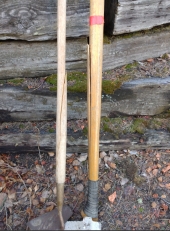






 1
1




"You must be the change you want to see in the world." "First they ignore you, then they laugh at you, then they fight you, then you win." --Mahatma Gandhi
"Preach the Gospel always, and if necessary, use words." --Francis of Assisi.
"Family farms work when the whole family works the farm." -- Adam Klaus









Rufus Laggren wrote:What tools do you have?(...) you usually run a piece through a _well set up_ table saw




 Got me there. Do you mean a chop saw? Captive circular saw hung over a table on an arm, pull it down to cut...
Got me there. Do you mean a chop saw? Captive circular saw hung over a table on an arm, pull it down to cut...






















Country oriented nerd with primary interests in alternate energy in particular solar. Dabble in gardening, trees, cob, soil building and a host of others.

 1
1














